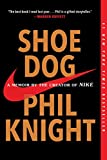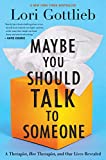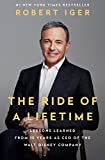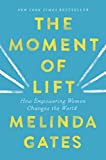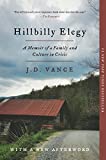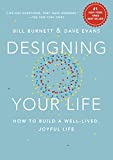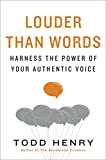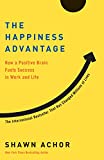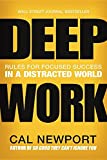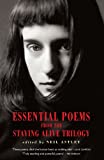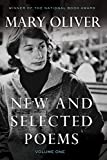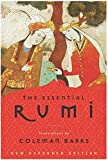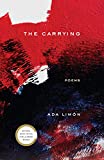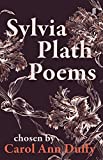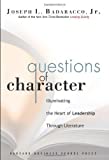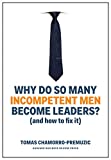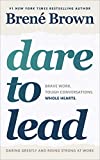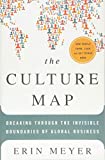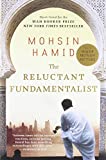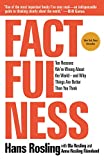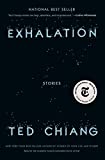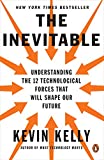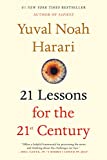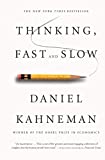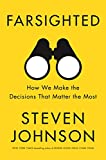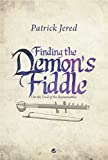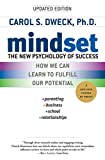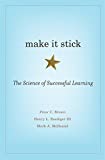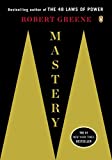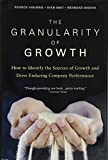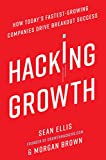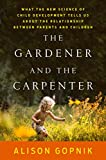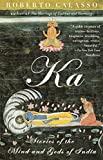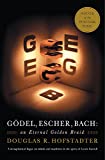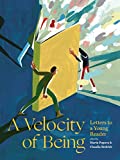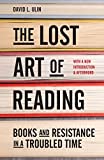Reading List
Read your way to the top!
Memoirs / Personal Growth / Poetry / Leadership / Connection / Perspective / Prepared / Places / Learning / Growth
Memoirs
The origin story of Nike told by its founder Phil Knight. Knight borrowed fifty dollars in 1963 to buy shoes that he could sell from the boot of his car. He went on to build Nike into the global business and brand it is today. Shoe Dog tells the story of that journey in a candid memoir that is as much a riveting read as it is an illuminating education on what it takes to succeed as a businessman and an entrepreneur.
As far as memoirs go, this one is a page-turner. It goes to Lori Gottlieb’s incredible writing ability that she has turned what could have been a dry subject (I mean, who would want to read about therapy sessions?) into an absolutely amazing read – not just entertaining, but emotionally gripping and thought-provoking. I ended the book with a better understanding of how humans grow and develop, how we process emotions and a deeper appreciation of the “work” we need to do to realize our potential as human beings.
The less visible side of leadership is risk-taking. The ability to make decisions about an uncertain future. The best way to learn this (other than the rather costly way of personal mistakes) is from closely following the decision-making process of those who have trod the path before. This book is at its best when Iger allows us windows into his thinking and the drama behind the scenes in the making of one of the most magical companies of our lifetime. Written with a friendly, earnest and sincere tone, the ideas and practices are as accessible as they are universal.
This is the kind of book that makes me want to shout from my roof top and recommend that everyone should read it. Right now. Melinda Gates gives us a behind-the-scenes view on addressing inequality among some of the most marginalized populations in the world. Her book is the best argument and call to action that I have come across for women’s empowerment (when we lift up women, it benefits everyone) along with heart-wrenching stories from her experiences around the world.
Subtitled “A Memoir of a Family and Culture in Crisis”, this book is written by a venture capitalist who grew up in rust-belt Ohio in a working class, dysfunctional family. This story has its appeal in being a universal tale that is not often told – to be white, male and impoverished feels like a contradiction of sorts in our current times, and rarely examined. The book has also been touted as an explanation for the popularity of Trump in America. The reviews have been divisive, but whichever side you belong in your views, it is still worth a read to get a better understanding of an American subculture. It is also beautifully written with an admirable honesty and self-introspection that earns it a spot in this list.
Personal Growth
Stanford professors Bill Burnett and David Evans turned their expertise in product design to develop an approach for designing a well-lived and joyful life. The course they teach on this topic has been called the most popular course on campus and the methodology has been has been tried and tested by thousands of people, from students to mid-career professionals to retirees contemplating a whole new future. You learn how to design the life you want using classical design techniques like reframing, wayfinding, prototyping and so on.
This is a book about finding your authentic voice. You might think that is only relevant if you are a writer or performer. However, Todd Henry takes a broader and more fundamental approach to the topic. He explores the existential questions of Who are you? (Identity), Where are you going? (Vision) and How will you get there? (Mastery). Ultimately it is about doing work that truly matters to you and that creates lasting and meaningful impact to others around you and the world at large.
I tend to stay clear of books that have Happiness in their title. But I was hooked on to this after Shawn Anchor spoke in one of our conferences (the next best thing to seeing Shawn in action is to watch his TED talk – highly recommended) and I learned something new and useful! I particularly like concepts which make me take a 180 degree turn on my point of view. Without giving the punchline away, I recommend you read the book The Happiness Advantage. While you are at it, you might also want to try other books by Shawn Anchor – in particular Big Potential, the basic premise of which is that while we can achieve our small potential alone, to achieve our BIG potential, we need to work with others, and he shows how to do that best by combining neuroscience and psychology with big data.
The concepts in this book – how success hinges on practice, experience and our ability to embrace failure – are not new. Perhaps if you have covered all these topics in other books, this one is not for you. But personally, this was a book that opened up new streams in my thinking, specifically because it draws from examples in a variety of fields, but most deeply from sports. As someone who had spent most of her childhood and youth playing competitive sports, I could see clear links between sporting success and business success – the kind which once you make them seem obvious, but I hadn’t identified them before. If you would like a well-written narrative based on multiple research streams drawn into a coherent book on how to strive for excellence, this is a good choice.
Deep Work is practical. And it is highly relevant for our times. I like Cal Newport’s clear distinction between deep work and shallow work. Shallow work is non-cognitively demanding, logistical-style work, often performed while distracted. The book is full of practical suggestions on how to improve our ability and time for deep work. The scariest point in this book is that if you spend enough time in a state of frenetic shallowness, you permanently reduce your capacity to perform deep work. So this can’t wait, let’s figure out how to cut out distractions from our life and get some deep work done.
Poetry
This is a compilation of 100 poems from the “Staying Alive Trilogy” that consists of “Staying Alive,” “Being Alive” and “Being Human,” each of which contains 500 carefully curated poems. The compilation is a further selection from these – it is a wonderful collection that explores the human condition with gentle honesty and leaves the reader feeling less alone and more alive.
Mary Oliver’s poems have the magical ability to help us see the “extraordinary in our everyday lives”, pose illuminating questions on the nature of life (and death) and does so with fantastically simple yet powerful words that rhyme, swirl and dance along the pages. If you like to look under the hood of poetry – why are we so unexplainably moved by seemingly simple arrangement of a few words - her “A Poetry Handbook” is an excellent companion read.
It does not matter if you count yourself as a spiritual person or not, Rumi’s ageless lyrical poems are often described as pure ecstasy and devotional and articulates what it feels to be alive. Often shrouded in mysticism and spiritual metaphors, they still have the uncanny ability to pierce through time and religious constrains to speak to us, even in this day and age, or maybe more so.
Ada Limon’s The Carrying has been at my bedside for several months now. Even though I finished it a while ago, I like flipping through it and re-reading a few before I go to bed. She writes with a simple honesty, but with a power to move that often takes me by surprise – Raincoat is my favourite in the collection, but there are so many beautiful poems, I am sure there is one for everyone.
Sylvia Plath is hard-hitting, but essential. Her poems are full of passion and truth, she wrote about gender, motherhood and marriage, of betrayal and suicidal illness, in poems illuminated – like lightning over the moors – by love and fury. When you read a poetry book, it is not just about the individual poems but the interplay between them and a subtly coherent narrative that is barely visible, but is definitely there. Carol Ann Duffy does a fantastic job in picking the right poems, ordering them in just the right placement and starting us off with a well-written preface.
Leadership
Traditional books on leadership are prone to theory, and often wonderfully divorced from the reality of everyday challenges. Literature is often a better tool to understand real-life, the facade of fiction allowing for a more transparent discussion of the truth. In "Questions of Character" Joseph L. Badaracco, Professor at Harvard Business School uses nine protagonists from literature to examine well-rounded, complex pictures of leaders in all walks of life.
Despite the rather unfortunate title (it has made me hesitate to gift this book to some people who would benefit from reading it), this is one of my favorite books on leadership. Based on decades of rigorous research, Chamorro-Premuzic investigates why the majority of leaders (mostly men) underperform compared to female leaders. The way I read it – it’s not because they are men per se, but because most organizations equate leadership potential with a handful of destructive personality traits, like overconfidence and narcissism. In other words, these traits may help someone get selected for a leadership role, but they backfire once the person has the job. The book then goes on to articulate what it really takes to lead and how systems and processes can help us put the right people in charge.
Leadership is about courage – anyone who has ever had to lead knows the sinking feeling in one’s stomach when you make decisions with incomplete information. The heart of daring leadership, as outlined in "Dare to Lead", is about being afraid and brave at the same time. Brown calls it “rumbling with vulnerability,” which is about leaning into rather than walking away from uncertain situations. When we choose courage over comfort, we dare to lead.
Connection
Our need for connection may be universal, but the way we connect is anything but. The Culture Map is categorized as a business book, and it is primarily aimed at decoding how cultural differences impact work across different countries. But it is ultimately about connecting across cultures, in whatever context it is required. Erin Meyer uses eight “scales” (e.g. communicating, trusting, persuading,…), where each scale is a continuum with the two ends, to describe a specific aspect of culture. While this may come across as a recipe for stereotyping, Meyer is clear to point out that it espouses just the opposite – people are ultimately treated as individuals, with her approach as a crutch to understand their cultural contexts better.
There is no coin without two sides – there is no appreciation of connection without the experience of loneliness. We, as humanity, seem to be struggle to come to terms with isolation in whatever degree we may be experiencing it. The Lonely City by Olivia Liang is an exploration of loneliness, an emotion often acknowledged only shamefully in modern society. In lyrical captivating writing, Laing conducts an electric, dazzling investigation into what it means to be alone, how could we live if we are not intimately engaged with another human being, how do we connect with other people, does technology draw us closer together or trap us behind screens…and many more such timely and relevant questions.
"Man's search for Meaning", a short, intense, classic book by Viktor Frankl, an Austrian psychotherapist, detailing his experience in the Nazi death camps. It captures not just human resilience in the face of adversity but also digs into how we humans can connect with our inner self and find meaning and purpose in life and persevere through terrible times.
Mohsin Hamid’s “Reluctant fundamentalist" is more of a conversation than a novel. As night begins to fall, a Pakistani man narrates a story to an uneasy American stranger at a café in Lahore. In that story, which is at once political, ideological and allegorical, many themes are covered, and Hamid does in the beautiful style of a masterful storyteller. But the one that stands out is about the core of human connection. In the face of racism and aggressive nationalism, Hamid questions whether it is possible for two unlike people to genuinely trust and respect one another, while also exploring humans’ fundamental need for these kinds of connections.
Social is a book about human connections - Matthew Lieberman, argues that our brains are literally “wired” to connect and that our need to connect with other people is even more fundamental, more basic, than our need for food or shelter. Our brain has two distinct networks that support social and non-social thinking, as one network increases its activity the other tends to quiet down. Lieberman goes on to prove in the book that the social network is the dominant and default one in humans, making us the social creatures that we are. He also draws out various implications for this in different fields such as education, workplace and individual wellbeing.
Perspective
One of my favorite books about perspective is Factfulness by Hans Rosling. Rosling was a medical doctor, a global health professional and the founder of Gapminder Foundation, an organization whose mission is to fight devastating ignorance. The book addresses much more than that – it explains ten “instincts” that make it difficult for humans to have a fact-based view of the world, and goes on to explain practical ways to avoid the pitfalls. It is an excellent read for our times, to help us sift out the fact from fake, the detail from the drama, the right from the rhetoric. It is an excellent guide to replacing our faulty instincts with critical thinking so that we may develop an independent perspective and see the world for what it is.
Exhalation is a wonderful collection of stories that make you think, it opens and bends your mind. My favourite is the story titled “The Truth of Fact, the Truth of Feeling”, about a near-future in which fallible human memory is superseded by searchable digital video. Chiang in his masterful prose takes us not only forward, but also backward to reflect on how the written word is really an augmentation of human memory. While most of us hold the “truth” in high esteem, the story also forces you to think of the concept of the absolute truth as a cultural construct, and as the title suggests, there is the possibility of the truth of the fact and the truth of the feeling, and one need not be better than the other.
Ray Dalio’s Principles addresses this topic in what he calls radical open-mindedness – the ability to explore different points of view without our ego or blind spots getting in the way. Principles is a clear and candid account of how Dalio started and grew Bridgewater Associates to be the largest and most successful hedge fund in the world. It is rare to get a view of the mistakes and learning of someone of that stature and achievements, even rarer to then have them abstract those and distill down into principles that you and I could apply.
Prepared
A child born in 1914 had a 1% probability of living to 100 years old. A child born in 2007 has a 50% chance of living to be 100. In the book The 100-Year Life, professors Lynda Gratton and Andrew Scott talks about a multi-stage life (as opposed to the three-stage life of education, employment and retirement that our grandparents experienced), and how we can be better prepared for it, especially from the perspective of education, career, finances and relationships.
Kevin Kelly has been following technology trends for more than three decades, which puts him in an excellent position to write about the future. In this book, he uses as a framework of fundamental forces - flowing, screening, accessing, sharing, filtering, remixing, tracking, and questioning—and demonstrates how they overlap and impact each other. It is an optimistic book which tries to paint a picture of the future where we are not pitted against the machines, but where we live in a better world with the machines.
Yuval Noah Harari's 21 Lessons for the 21st Century is an examination into some of the most urgent issues that we face today. Our world is changing constantly, technology is moving faster than we are able to comprehend – how do we survive, and thrive in this environment? Through 21 lessons, Harari helps us to prepare for a future that would be very different from the world we currently live in.
This is a book about thinking. We think therefore we are, but do we know how we think? Kahneman explains the two different systems of thinking - System 1 which is fast, intuitive, and emotional, System 2 which is slower, more deliberative, and more logical. Kahneman exposes the extraordinary capabilities—and also the faults and biases—of fast thinking and reveals the pervasive influence of intuitive impressions on our thoughts and behavior. To understand how we think, act and make choices, and thus training for the right choices and actions this is a must-read.
Humans are a near-sighted race. But the decisions we have to make often have far reaching consequences. In “Farsighted,” Johnson examines the decision-making process, especially for decisions with long-term impact. Through compelling stories and vivid storytelling, he explains how we can most effectively approach the choices that can chart the course of a life, an organization, or a civilization.
Places
John Steinbeck drives across America – from Maine to Monterey, together with Charley, his French poodle. It’s an engaging read, peppered with many colorful characters he encounters along the way, from old friends or big bears. He reflects on the American culture and way of life and more universal questions like loneliness, but perhaps unique its own American version. In Steinbeck’s own words, 'A journey is a person in itself; no two are alike,' he says. 'And all plans, safeguards, policing, and coercion are fruitless. We find after years of struggle that we do not take a trip; a trip takes us.'
An exquisite example of travel literature, Chatwin’s genius comes alive in this quest for a mythical brontosaurus relic in South America. Its been described as being about the “unseen, unknowable and about remoteness itself.” With meandering prose that takes the reader along this unusual adventure, the writing is full of imaginative descriptions, anecdotes and historical detail. A joy to read.
As a long-term resident of Amsterdam, I loved this book – Russell Shorto does a wonderful job of capturing the spirit of this strange city, a city of many contradictions, eclectic personalities and a fascinating history. Founded in around 1100, the city residents have had to fight hard to keep the city above water (there are parts of the city which when you drive through show you how much below sea level you are on the car dashboard!) – a unique geographic position that has left an indelible mark on the culture of the place. Shorto does an excellent job of pealing the obvious to lay bare the nuances and complexities in an intellectually stimulating and engaging read.
Karen Blixen, born into a wealthy family in Denmark, moves to Kenya with her husband, to manage a four-thousand-acre coffee plantation in the hills near Nairobi. After her divorce, she decides to stay on and try to run the farm herself, and this book is her her account of her African adventures, till the time she loses her beloved farm and returns to Denmark. Blixen describes her life and the life around her in vivid detail, it is the work of a gifted storyteller and a remarkable and unconventional woman.
Part travel-writing, part detective work and part exploration of mythology, the book is about the writer’s journey to find the origins of Ravanahatta, a predecessor to the violin, and invented, supposedly by the Demon King Ravana. Jered manages to interleave philosophy, mythology and humor in a long book that is so engaging and beautifully written that it feels surprisingly short. It is a book to savor, to absorb, and let yourself go along in the obsessive quest of the writer to get to the bottom of the mystery of this ancient instrument.
Learning
The concept of growth mindset, which has infiltrated into popular lexicon these days, was first popularized in the book “Mindset”. Carol S. Dweck shows how success in almost every field of human endeavor is influenced by how we think about our talents and abilities. People with a fixed mindset — those who believe that abilities are fixed — are less likely to flourish than those with a growth mindset — those who believe that abilities can be developed. It gives practical ideas on how parents, teachers, managers, athletes and business leaders can put this idea to use to promote success.
This book by Mortimer Adler and Charles Van Doren is an old classic and one of the view that takes a comprehensive approach to the science of reading. The book distinguishes between four levels of reading—elementary, inspectional, analytical, and syntopical. It recommends when to apply which level, and how to approach different kinds of reading materials—practical and theoretical books, imaginative literature (lyric poetry, epics, novels, plays), history, science and mathematics, social science, and philosophy.
“How to Succeed in School Without Spending All Your Time Studying” says the tagline of this book, this is something most students might want to read, if only for the promise of reducing the time they have to spend on studying. Based off a popular online course "Learning How to Learn" (aimed at adults), this book is aimed at a younger audience, to help them develop learning strategies earlier in life. The book examines and explains in simple language how the brain works and then goes onto draw out the implications and therefore tips on how to read better. Recommended for ages 10+.
Drawing on recent discoveries in cognitive psychology and other disciplines, the authors offer concrete techniques for becoming more productive learners. In this book, they offer new insights into how memory is encoded, consolidated, and later retrieved, thus leading to a better understanding of how we learn. Grappling with the impediments that make learning challenging leads both to more complex mastery and better retention of what was learned.
In this book, Robert Greene analyzes what it takes to achieve mastery by interrogating the lives of past masters such as Charles Darwin, Benjamin Franklin, Albert Einstein, and Leonard da Vinci, as well as contemporary masters, such as tech guru Paul Graham, animal rights advocate Temple Grandin etc. Greene debunks our culture’s many myths about genius and distills the wisdom of the ages to reveal the secret to greatness.
Growth
“Growth” covers the broad concept of growth, from megacities to micro-organisms. The book, through rigorous analysis, tries to make the point that the end of growth is inevitable. However, I read Smil because he is a historian, not necessarily a futurist, and what I particularly like about the book is its rigorous examination of the concept of growth as applied to both nature and society. It examines the rules and patterns of growth in energy consumption, human artifacts, and human populations, societies and economies.
This is a book on growth for corporates. While growth is a top priority for companies of all sizes, it can be extremely difficult to create and maintain―especially in today’s competitive business environment. The central concept of the growth, which while simple on the outside, takes a while to fully comprehend and even longer to implement is about the need to focus on the right granularity. Look at businesses in a more “fine grained” fashion, and you are more likely to identify and capture sustainable growth.
This is a how-to grow book for smaller companies and startups to drive towards breakout success. Successes are often attributed to innovation and great products – both are often critical, and often necessary elements to success. However, equally important is a growth approach. This is a book that tackles how to get and keep customers, and to how to motivate them to use your product and keep coming back for more.
A book recommendation on personal growth will always be a matter of personal choice. With no one path of personal growth being more right than another, the choice of a book depends on one’s philosophy. In “On the Shortness of Life,” a timeless classic, Seneca offers us an urgent reminder on the non-renewability of our most important resource: our time. He says, ““It is not that we have a short time to live, but that we waste a lot of it.” It is an excellent read for anyone looking to live to their full potential, it is a manifesto on how to get back control of your life and live it to the fullest.
If you are a parent, it is hard to hear of the term “growth” and not associate it with the everyday growth that you observe real-time in your children. The term “parenting” refers precisely to how we enable and encourage that growth for the best possible outcomes. In this book, Alison Gopnik tells us that we have all got parenting all wrong - the key is to not try to chisel our perfect children (like carpenters), but to plant a thousand seeds, provide the right nourishment and watch the flowers bloom (like a gardener).
May 2020
Part novel, part mythological epic, part sacred text, Ka is a work of imagination and scholarship by the incomparable Robert Calasso where he tries to tackle the sprawling and elusive corpus of Indian mythology and classical Sanskrit literature.
I can’t remember when I started reading this book, tackling sections whenever time permits and re-reading them on occasion. Described as “the metaphorical fugue on minds and machines in the spirit of Lewis Carroll,” GEB is a book about a mathematician, an artist and a musician, which NYTimes describes in an unsatisfactory one-liner as a scientist’s argument that reality is system of interconnected braids.
“We all play games. In the workplace, in the boardroom, in the bedroom even when we are not aware of it.” So says the blurb of this book. What a cynical view, was my first thought. Then I remembered the times I’ve felt played, and figured I might need to read this book – it is an interesting analytical view on the psychology of relationships and the underlying patterns of behavior.
We are reading this as a family, reading perhaps the wrong word to use, since the art work in every alternate page is as much as savor as the words on the accompanying page. A compilation of 121 letters addressed to young readers, the book is simultaneously playful and powerful in defending the dignity and authority of the written word.
The Lost Art of Reading is a meditation on why books matter in a distracted world. According to Ulin, reading is a revolutionary act, an act of engagement in a culture that wants us to disengage. In a world devoured by fragmentation, dilution and refraction, Ulin poses questions about the lost art of reading that are important for us to answer, not just as individuals but also for the society as a whole.

